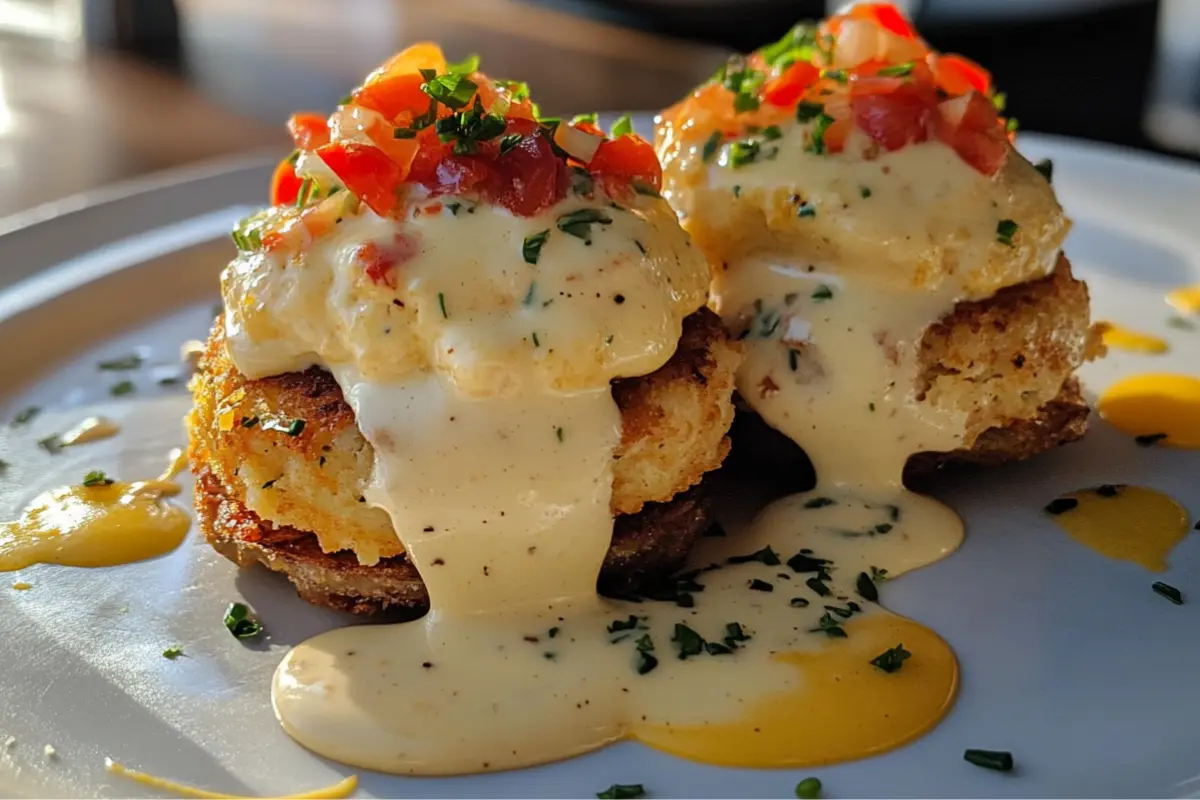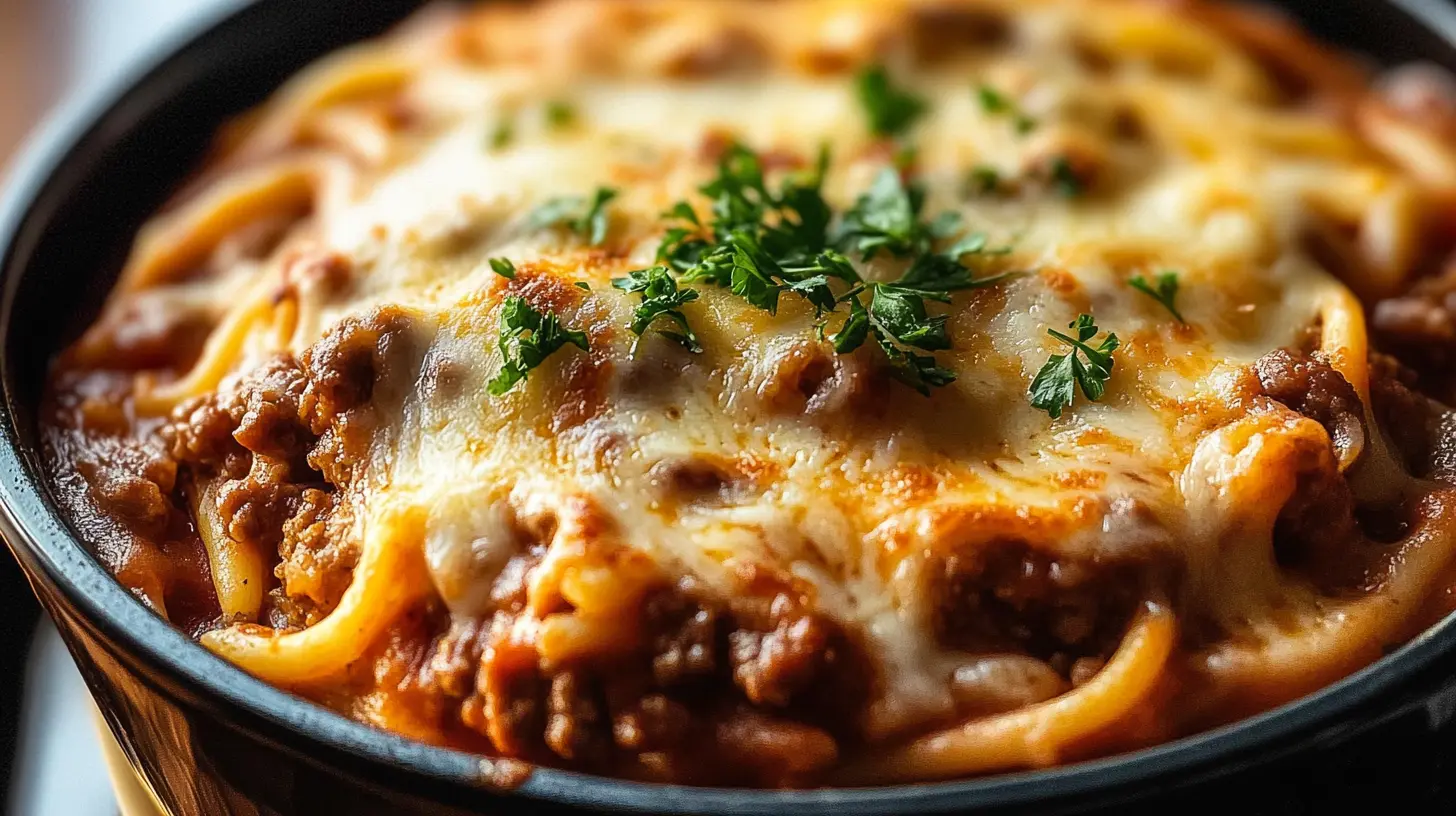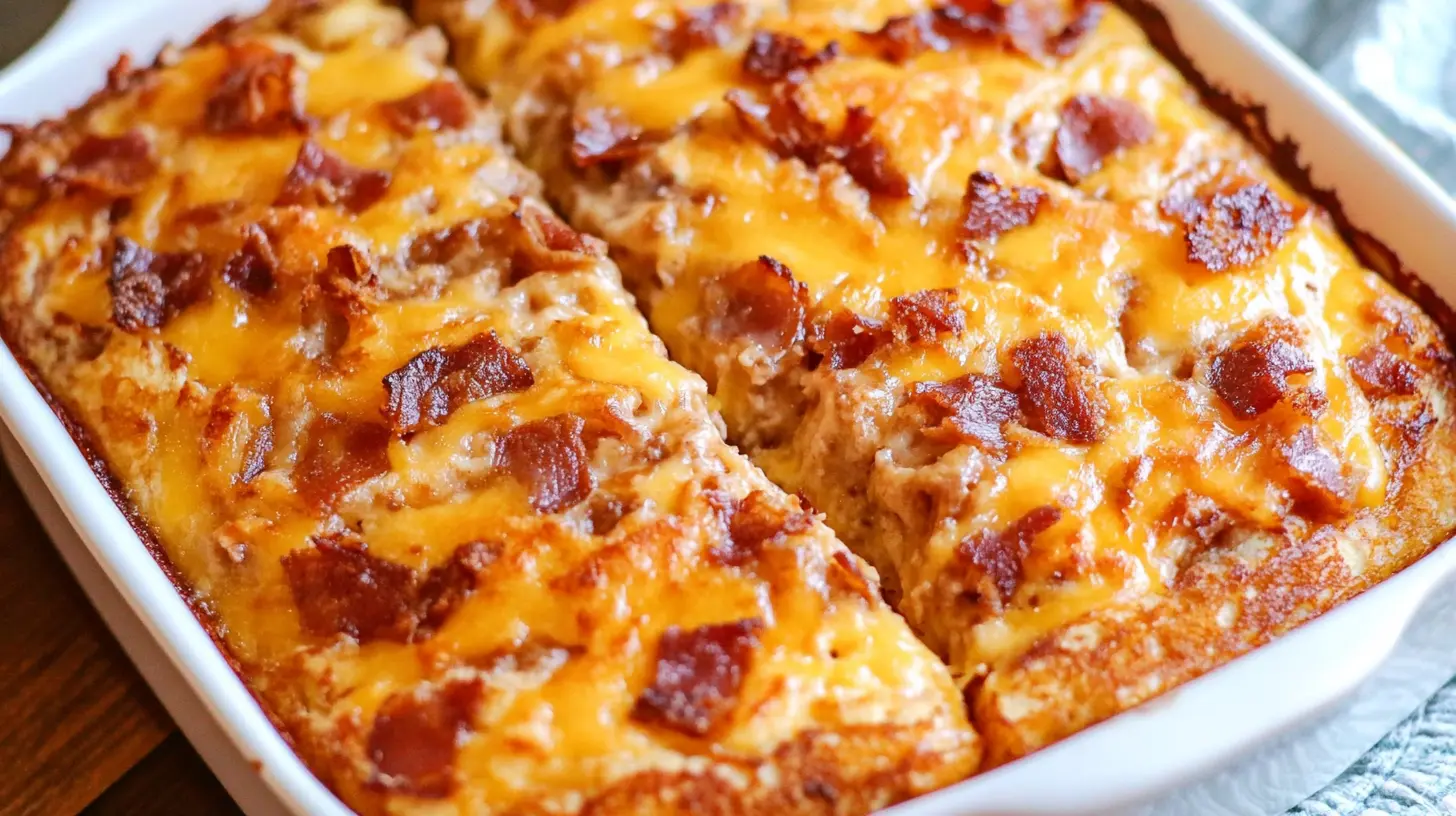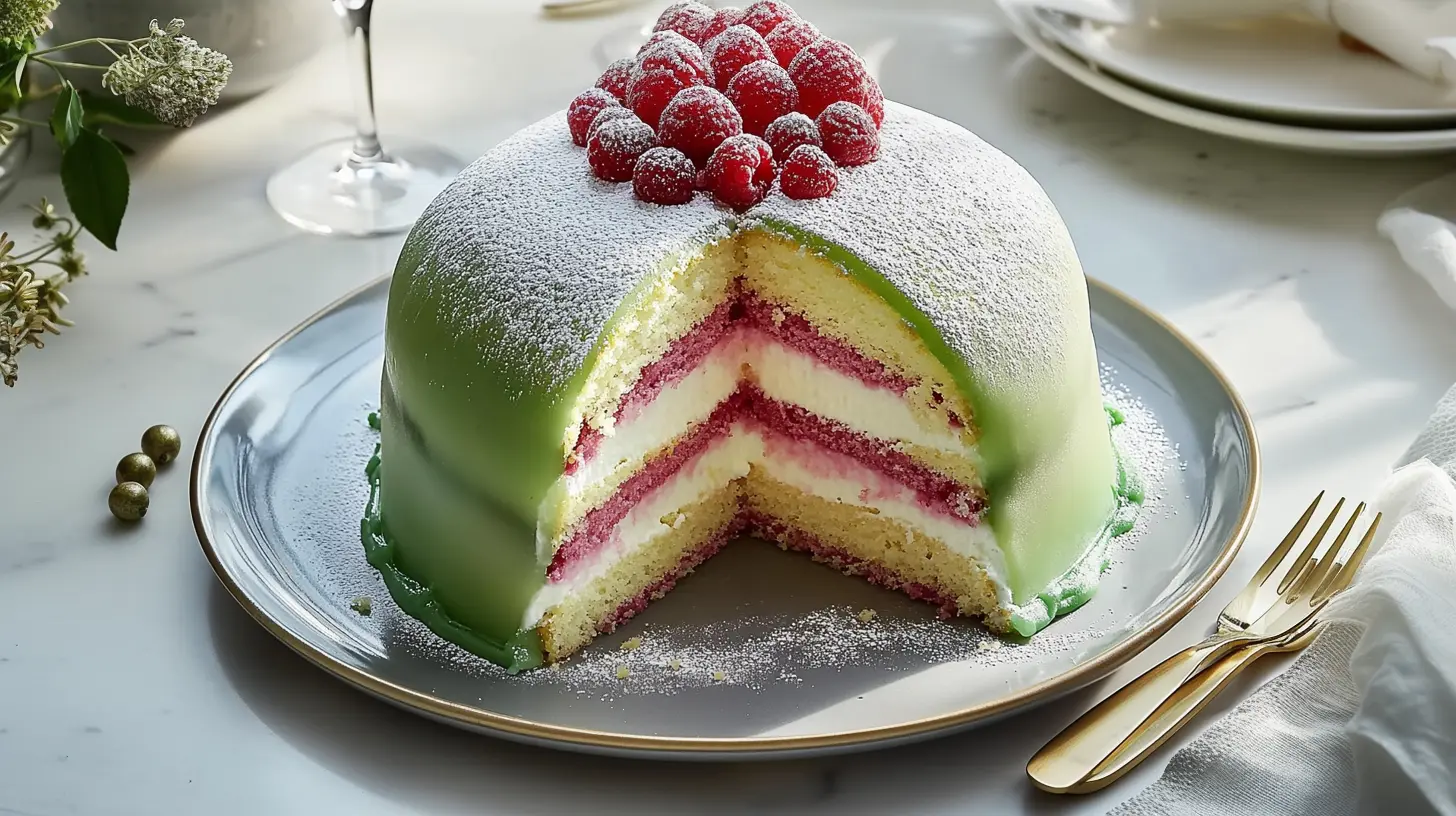Introduction to Crab Cake Benedict
Crab Cake Benedict is a delightful variation of the traditional Eggs Benedict, combining the savory flavors of crab cakes with perfectly poached eggs and a rich hollandaise sauce. This dish not only brings a gourmet flair to your breakfast table but also offers numerous health benefits, making it a perfect choice for diet-conscious individuals and food enthusiasts alike. Whether you are a busy parent looking for a quick yet impressive dish or a food enthusiast eager to explore new tastes, the Crab Cake Benedict is an ideal option. With its simplicity and versatility, this recipe caters to a wide range of dietary needs, including gluten-free and low-carb diets. Plus, it can easily be modified to suit vegan preferences.
For those who enjoy experimenting with flavors, the Crab Cake Benedict offers a wonderful opportunity to blend fresh seafood with the creamy goodness of hollandaise sauce. Pair this dish with a refreshing side from our Smoked Salmon Recipes for a complete brunch experience. Dive into this recipe, and let the flavors transport you to a coastal paradise.
Benefits and Advantages of Crab Cake Benedict
Crab Cake Benedict stands out for several reasons. Firstly, it is incredibly easy to prepare, requiring minimal kitchen skills while still yielding a dish that looks and tastes like it came from a high-end restaurant. Furthermore, the combination of crispy crab cakes, soft poached eggs, and tangy hollandaise sauce provides a delightful contrast in textures and flavors that will impress even the most discerning palate. Moreover, this recipe is versatile and adaptable, allowing for various dietary customizations to suit different preferences and needs. Whether you are catering to a gluten-free diet, a low-carb lifestyle, or simply looking for a delicious seafood option, this dish can be easily modified to accommodate.
From a health perspective, the Crab Cake Benedict is a protein-rich dish, with the crab providing lean protein and essential nutrients such as Omega-3 fatty acids, vitamin B12, and selenium. These nutrients, in turn, support heart health, boost brain function, and promote overall well-being. Additionally, for those following a low-carb or gluten-free diet, the crab cakes can be made without breadcrumbs or using gluten-free alternatives, making this dish a guilt-free indulgence. Therefore, it’s not only delicious but also aligns with healthier eating habits.
For a unique twist on seafood, consider exploring our Crab Brulee Recipe – another fantastic option for seafood lovers. With its ease of preparation and impressive nutritional profile, Crab Cake Benedict is a great addition to any meal plan, whether for a weekend brunch, a special occasion, or a simple weekday breakfast. Thus, it’s an excellent choice for those looking to enjoy a luxurious meal with minimal effort.
Ingredients Overview
Essential Ingredients for Crab Cake Benedict
- Crab Meat (1 lb, fresh or canned): Provides the base for the crab cakes, rich in protein and essential nutrients.
- Eggs (4 large): Used both in the crab cake mixture and for poaching.
- Breadcrumbs (1 cup, can be substituted with gluten-free breadcrumbs): Helps bind the crab cakes together.
- Mayonnaise (¼ cup): Adds moisture and a creamy texture to the crab cakes.
- Dijon Mustard (1 tbsp): Enhances the flavor with a subtle tang.
- Old Bay Seasoning (1 tsp): A classic spice blend that pairs well with seafood.
- Fresh Parsley (2 tbsp, chopped): Adds color and a fresh, herby flavor.
- Lemon Juice (1 tbsp): Provides a bright acidity that complements the richness of the crab.
- Butter (½ cup, unsalted): Used for the hollandaise sauce and cooking.
- White Vinegar (1 tbsp): Helps stabilize the poaching water for the eggs.
- English Muffins (2, split and toasted): The traditional base for Eggs Benedict; can be substituted with gluten-free options.
Dietary Substitutions to Customize Your Crab Cake Benedict
For those following specific dietary plans, here are some substitutions to customize your Crab Cake Benedict:
- Gluten-Free: Use gluten-free breadcrumbs and English muffins.
- Low-Carb/Keto: Replace the breadcrumbs with crushed pork rinds or almond flour, and use a low-carb bread option or omit the muffin altogether.
- Vegan Option: Replace the crab meat with shredded hearts of palm or chickpeas, use a vegan egg substitute, and opt for a dairy-free hollandaise sauce.
These substitutions ensure that everyone can enjoy a delicious Crab Cake Benedict, regardless of dietary restrictions.
How to Prepare the Perfect Crab Cake Benedict: Step-by-Step Guide
First Step: Prepare the Crab Cakes
- Mix the Ingredients: In a large bowl, combine the crab meat, breadcrumbs, mayonnaise, Dijon mustard, Old Bay seasoning, chopped parsley, and lemon juice. Mix gently to avoid breaking up the crab meat too much.
- Shape the Cakes: Form the mixture into four equal-sized patties. Place them on a plate and refrigerate for at least 30 minutes to help them hold their shape during cooking.
- Cook the Crab Cakes: In a skillet, heat 2 tablespoons of butter over medium heat. Add the crab cakes and cook for 4-5 minutes on each side, or until golden brown and heated through. Remove from the skillet and set aside.
Second Step: Prepare the Hollandaise Sauce
- Melt the Butter: In a small saucepan, melt ½ cup of butter over low heat.
- Blend the Sauce: In a blender, combine 3 egg yolks, 1 tablespoon of lemon juice, and a pinch of salt. Blend on low speed for 20-30 seconds. With the blender running, slowly drizzle in the melted butter until the sauce is thick and creamy.
- Keep Warm: Transfer the hollandaise sauce to a bowl and keep warm by placing it over a pan of hot water.
Third Step: Poach the Eggs
- Boil the Water: Fill a medium saucepan with water and bring it to a gentle boil. Add 1 tablespoon of white vinegar to help the eggs set.
- Poach the Eggs: Crack each egg into a small bowl and gently slide it into the boiling water. Poach for 3-4 minutes, or until the whites are set and the yolks are still runny.
- Drain and Set Aside: Use a slotted spoon to remove the eggs from the water and set them on a paper towel-lined plate to drain.
Fourth Step: Assemble the Crab Cake Benedict
- Toast the Muffins: Split and toast the English muffins.
- Layer the Components: Place one crab cake on each half of the toasted muffins. Top each crab cake with a poached egg.
- Drizzle with Hollandaise: Spoon the hollandaise sauce generously over the poached eggs and serve immediately.
Mastering Crab Cake Benedict: Advanced Tips and Variations
Mastering the art of Crab Cake Benedict involves more than just following a recipe; indeed, it requires understanding the nuances of each component and how they work together to create a harmonious dish. Whether you’re preparing this for a special brunch or just want to impress your family and friends, here are some advanced tips and creative variations to elevate your Crab Cake Benedict to the next level. In addition, these suggestions will help you refine your skills and explore new flavors:
Achieve the Perfect Poach
The poached egg is arguably the star of any Eggs Benedict variation, and achieving the perfect poach is crucial for an impressive presentation and delicious taste. For the best poaching results, consider the following tips:
- Use Fresh Eggs: Fresh eggs have firmer whites that hold their shape better when poaching. If you’re unsure about the freshness of your eggs, you can conduct a simple float test: fresh eggs will sink in water, while older eggs tend to float. Thus, starting with fresh eggs is key.
- Add a Splash of Vinegar: Adding a small amount of vinegar to the boiling water helps the egg whites coagulate more quickly, maintaining a more compact shape. This way, the poached eggs will look neat and stay together.
- Create a Gentle Whirlpool: Before adding the eggs, use a spoon to create a gentle whirlpool in the simmering water. By doing this, you help fold the whites around the yolk, resulting in a more uniform poached egg. Consequently, the eggs will have a more consistent appearance.
- Mind the Temperature: Keep the water at a gentle simmer rather than a rolling boil. Otherwise, too much movement can cause the eggs to break apart. Therefore, controlling the heat is essential for perfect poaching.
Experiment with Toppings
While the classic Crab Cake Benedict is delicious on its own, adding different toppings can take the dish to new heights. Here are some creative topping ideas to consider:
- Sautéed Spinach: Adding a layer of sautéed spinach between the crab cake and the poached egg introduces a fresh, slightly earthy flavor that balances the richness of the dish. Moreover, it also adds a pop of vibrant green color, enhancing the visual appeal.
- Avocado Slices: For a creamy texture and healthy fats, top your crab cake with thin slices of ripe avocado. Not only does the mild flavor of avocado complement the rich flavors without overpowering them, but it also makes it a perfect addition for avocado lovers.
- Smoked Salmon: Incorporating smoked salmon adds a luxurious touch and a subtle smoky flavor that pairs beautifully with the crab cakes. This variation, often referred to as “Eggs Royale,” combines two beloved seafood items for a sophisticated twist on the original.
- Pickled Red Onions or Jalapeños: For a bit of tang and heat, consider adding pickled red onions or jalapeños. These toppings provide a zesty contrast to the creamy hollandaise and tender crab cakes, bringing a delightful complexity to each bite. In this way, they add both flavor and texture.
Customize the Sauce
The hollandaise sauce is a key element of Crab Cake Benedict, and customizing it with unique flavors can add a personal touch to your dish. Here are a few ideas to try:
- Herb-Infused Hollandaise: Infuse your hollandaise sauce with fresh herbs like dill, tarragon, or chives for a burst of flavor. Dill, in particular, pairs well with seafood, adding a refreshing contrast to the richness of the crab cakes and sauce. Furthermore, these herbs can enhance the aroma and visual appeal.
- Citrus Zest: Incorporate a bit of lemon or orange zest into your hollandaise sauce to enhance its brightness and add a subtle, aromatic note. This addition works wonderfully to cut through the richness of the dish, making each bite feel lighter. Thus, it’s perfect for those looking to add a fresh twist.
- Spicy Hollandaise: For those who enjoy a bit of heat, add a pinch of cayenne pepper, smoked paprika, or a dash of hot sauce to the hollandaise. This spicy variation brings a new dimension to the flavor profile and can be a delightful surprise for your guests. Consequently, it adds excitement to every bite.
- Wasabi Hollandaise: For an unexpected twist, mix a small amount of wasabi paste into your hollandaise sauce. This Japanese-inspired variation adds a mild heat and a unique flavor that complements the sweetness of the crab. Additionally, it introduces a fusion element to the dish, making it stand out even more.
How to Store Crab Cake Benedict: Best Practices
To store any leftovers, follow these best practices:
- Refrigeration: Store crab cakes and hollandaise sauce separately in airtight containers in the refrigerator for up to 2 days.
- Freezing: Crab cakes can be frozen for up to 3 months. Thaw overnight in the refrigerator before reheating.
- Reheating: Reheat crab cakes in a skillet over medium heat or in an oven preheated to 350°F. Gently reheat the hollandaise sauce over a double boiler.
Nutritional Value of Crab Cake Benedict
Crab Cake Benedict is a nutritious meal packed with:
- Calories: Approximately 450 per serving
- Protein: 22 grams
- Fat: 32 grams
- Carbohydrates: 15 grams
- Fiber: 1 gram
- Sodium: 800 mg
These values will vary based on specific ingredient choices and portion sizes.
FAQs: Frequently Asked Questions About Crab Cake Benedict
Q: Can I make the crab cakes ahead of time?
A: Yes, you can prepare the crab cakes up to a day in advance. Store them in the refrigerator and cook just before serving.
Q: What can I use instead of English muffins?
A: For a low-carb option, try using roasted portobello mushroom caps or thick slices of tomato.
Q: How do I make the hollandaise sauce thicker?
A: If your hollandaise sauce is too thin, blend in an additional egg yolk or reduce the amount of lemon juice.
Q: Can I freeze the hollandaise sauce?
A: It’s not recommended to freeze hollandaise sauce as it can separate. It’s best made fresh.
By following these steps and tips, you’ll master the art of making a delicious Crab Cake Benedict that’s sure to impress at your next brunch gathering!
Why are they called Eggs Benedict?
The origin of Eggs Benedict is somewhat contested, but the most popular story traces back to Lemuel Benedict, a Wall Street broker, who allegedly ordered a combination of poached eggs, buttered toast, crispy bacon, and hollandaise sauce at the Waldorf Hotel in New York in 1894. The chef was inspired to add it to the menu, substituting an English muffin and ham or Canadian bacon, which led to the creation of what we now know as Eggs Benedict. You can learn more about the history and variations of this dish on Wikipedia.
Conclusion
Crab Cake Benedict and its classic counterpart, Eggs Benedict, remain popular choices for those seeking a decadent yet satisfying meal. With its blend of rich flavors and textures, this dish appeals to a wide range of tastes and dietary preferences. Understanding the origins, variations, and key preparation tips for Eggs Benedict enhances the appreciation of this beloved brunch dish. Whether you are a seasoned chef or a home cook, mastering the art of Eggs Benedict or trying out a new twist like Crab Cake Benedict can be a rewarding culinary adventure.
For more about the history and variations of Eggs Benedict, visit Wikipedia’s Eggs Benedict page.

Posted by: Hailee | October 30, 2024
I’m passionate about sharing sweet and savory recipes that I’ve meticulously tested and perfected in my own kitchen. Join me on this delicious journey to experience the best of culinary creativity.




